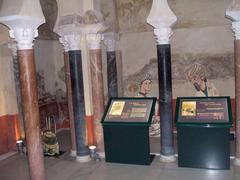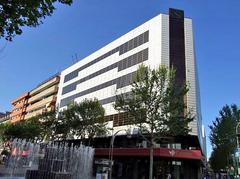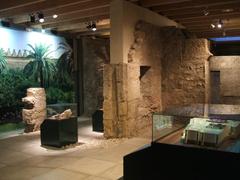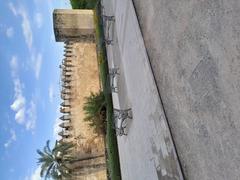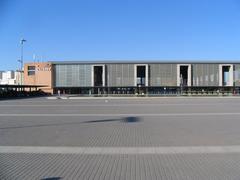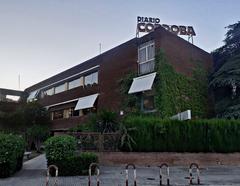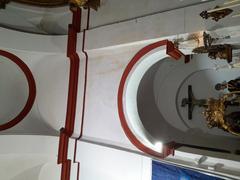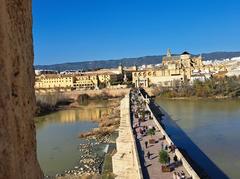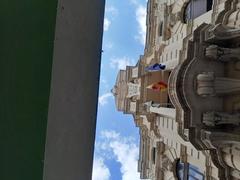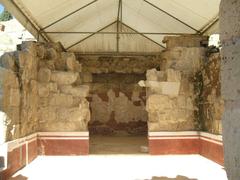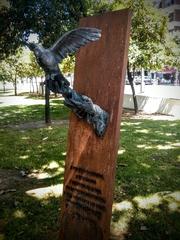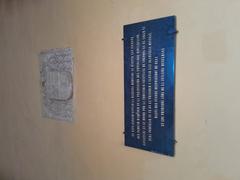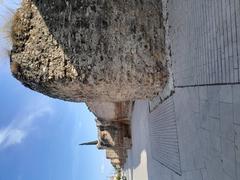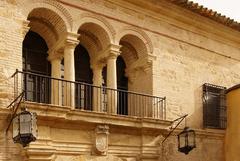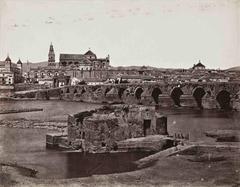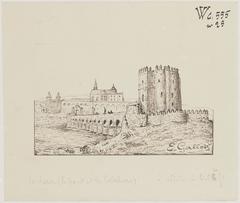Puente Romano Córdoba: Visiting Hours, Tickets, and Comprehensive Guide to Historical Sites
Date: 14/06/2025
Introduction to Puente Romano Córdoba
The Puente Romano of Córdoba, also known as the Roman Bridge, is one of Spain’s most emblematic historical monuments. Spanning the Guadalquivir River, this architectural marvel dates back nearly 2,000 years and stands as a testament to Córdoba’s dynamic past. Originally constructed as part of the Roman Via Augusta, the bridge has witnessed the city’s transformation through Roman, Islamic, and Christian epochs. Today, it serves as a vibrant pedestrian walkway and a focal point for heritage tourism, offering panoramic city views, particularly of the Mezquita-Catedral. Open 24/7 and free to visit, the Puente Romano is an essential stop for anyone interested in Córdoba’s layered history, architectural evolution, and vibrant cultural life (tocordoba.com; andalucia.com; andalucialovers.com).
Historical Overview
Roman Origins and Early Construction
Built in the late 1st century BC or early 1st century AD, the Puente Romano was a vital part of the Via Augusta, linking Rome with Cádiz. The bridge was initially constructed with 17 arches (16 remain today) using local limestone, and it measured approximately 331 meters in length and 9 meters in width. For centuries, it was the only crossing point over the Guadalquivir, essential for military, trade, and urban development (tocordoba.com; thetravel.com; sevillecityguide.com).
Medieval Transformations and Islamic Influence
During the Islamic rule from the 8th century, Córdoba became the capital of Al-Andalus. The bridge was reconstructed with Moorish styles, and defensive features like the Torre de la Calahorra were added in the 12th century, serving as a fortified gate to control access to the city (nomads-travel-guide.com; idealista.com).
Christian Reconquest and Renaissance Additions
After the Christian Reconquista in the 13th century, the bridge regained strategic importance. In the 16th century, the Puerta del Puente—a Renaissance-style triumphal arch—was constructed at the northern end, while the Baroque statue of San Rafael was installed in 1651, further enriching the bridge’s artistic and religious significance (nomads-travel-guide.com; cordoba24.info; eldiariodeandalucia.com).
Modernization, Restoration, and Conservation
The bridge supported vehicular traffic until 2004 when it was pedestrianized to prioritize preservation and enhance the visitor experience (thetravel.com; sommertage.com). Recognized as a Bien de Interés Cultural in 1991 and as part of Córdoba’s UNESCO World Heritage site since 2012, the bridge has undergone significant restoration, including structural reinforcement and the installation of night-time lighting (eldiariodeandalucia.com).
Architectural Features
- Arches: The bridge features 16 arches—some semicircular (Roman) and others pointed (medieval/Moorish)—reflecting its historical layers (turismodecordoba.org).
- Materials: Built primarily from local limestone and brick, with cobbled paving added in the 19th century.
- Defensive Structures: The Torre de la Calahorra at the southern end exemplifies Moorish military architecture, while the Renaissance Puerta del Puente and the Baroque San Rafael statue add Christian artistic elements.
- Integration: The bridge links the historic center with the Campo de la Verdad district and is aligned with the city’s ancient walls and gates (thegapdecaders.com).
Visiting Hours and Ticket Information
- Bridge Access: Open 24 hours a day, year-round. No admission fee is required.
- Torre de la Calahorra Museum: Open daily (hours may vary seasonally), with tickets around €4.50 for adults; discounts available (Visit Southern Spain).
- Puerta del Puente: Exterior viewing only; not open for interior visits.
- Accessibility: The bridge is fully pedestrianized and wheelchair accessible, though some areas near the tower may have uneven surfaces (andalucialovers.com).
Nearby Attractions
- Mezquita-Catedral de Córdoba: A UNESCO World Heritage Site just minutes away, renowned for its unique combination of mosque and cathedral architecture (Rough Guides).
- Alcázar de los Reyes Cristianos: Located nearby, offering lush gardens and historical interiors.
- Jewish Quarter: An atmospheric area with narrow lanes and traditional patios.
- Sotos de la Albolafia: Riverside parklands ideal for walks and birdwatching.
Best Times to Visit and Practical Tips
- When to Go: Early mornings or evenings (especially at sunset) offer the most comfortable temperatures and dramatic lighting for photography. Spring and autumn are ideal to avoid summer heat.
- Duration: Allow 30–60 minutes for the bridge itself; longer if combining with the tower or nearby attractions.
- Facilities: No toilets or shops on the bridge, but amenities are plentiful nearby in the city center.
- Safety: The area is well-lit at night and generally safe, but be mindful of pickpockets during crowded times.
- Mobility: The 2008 renovation ensures a smoother surface, but the bridge can become slippery when wet.
Special Experiences and Cultural Life
- Guided Tours: Many local operators offer walking tours that include the Puente Romano, Mezquita-Catedral, and Jewish Quarter, providing expert historical context.
- Boat Rides: River tours offer unique views of the bridge and cityscape.
- Events: The bridge is a focal point during Semana Santa processions and featured in local festivals.
- Game of Thrones: The bridge appeared as the Long Bridge of Volantis in HBO’s series, appealing to fans and pop culture enthusiasts (Visit Southern Spain).
Frequently Asked Questions (FAQ)
Q: What are the Puente Romano Córdoba visiting hours?
A: The bridge is open 24/7, year-round.
Q: Is there a ticket or entrance fee?
A: No, the bridge is free to access at any time.
Q: Are guided tours available?
A: Yes, guided tours including the bridge and other monuments are widely available.
Q: Is the bridge wheelchair accessible?
A: Yes, the bridge is accessible, but some adjacent areas may require assistance.
Q: Are there facilities on the bridge?
A: No, but many amenities are available nearby in the historic center.
Summary Table: Key Visitor Information
| Feature | Details |
|---|---|
| Opening Hours | 24/7, year-round |
| Admission | Free for the bridge; Torre de la Calahorra ~€4.50 |
| Length | 331 meters |
| Number of Arches | 16 (originally 17) |
| Accessibility | Wheelchair/stroller accessible |
| Best Visiting Times | Early morning, late afternoon, sunset, spring, autumn |
| Nearby Attractions | Mezquita-Catedral, Torre de la Calahorra, Jewish Quarter |
| Facilities | No toilets/shops on bridge; amenities nearby |
| Guided Tours | Available; enhance the historical experience |
| Special Notes | Illuminated at night; featured in Game of Thrones |
Visuals and Media
- Panoramic daytime photo of Puente Romano Córdoba with Guadalquivir River (alt: “Panoramic view of Puente Romano Córdoba over Guadalquivir River”)
- Close-up of Roman arches showing architectural details (alt: “Roman arches of Puente Romano Córdoba”)
- Nighttime illumination with Mezquita-Catedral in background (alt: “Puente Romano Córdoba illuminated at night with Mezquita-Catedral”)
- Torre de la Calahorra fortified tower (alt: “Torre de la Calahorra at the southern end of Puente Romano Córdoba”)
For virtual tours and high-quality images, visit the official Córdoba tourism website (turismodecordoba.org).
Plan Your Visit
The Puente Romano is more than a bridge—it’s a living timeline of Córdoba’s past and a vibrant part of its present. Plan your visit to enjoy not only the architectural splendor but also the city’s cultural and natural attractions. For the latest updates, guided tour options, and special events, consult the official Córdoba tourism website or download the Audiala app. Share your experiences with #PuenteRomanoCordoba and become part of the ongoing story of this remarkable landmark.
